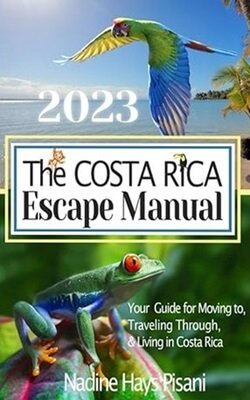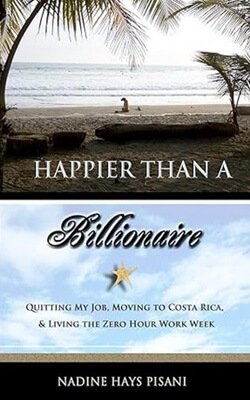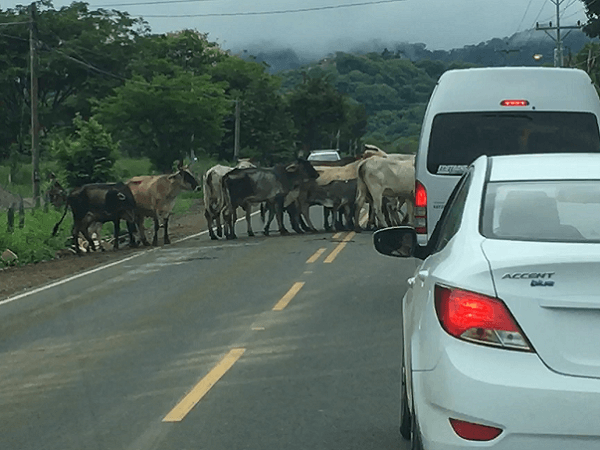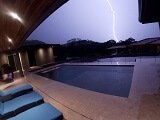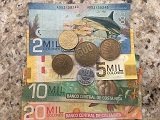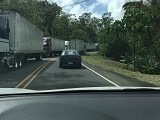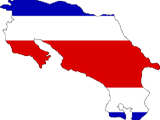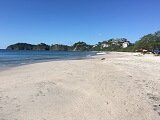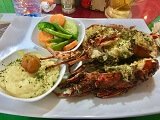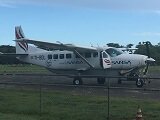- Home
- Visiting Costa Rica
- Things To Do
- Manuel Antonio
Search this site
Manuel Antonio National Park
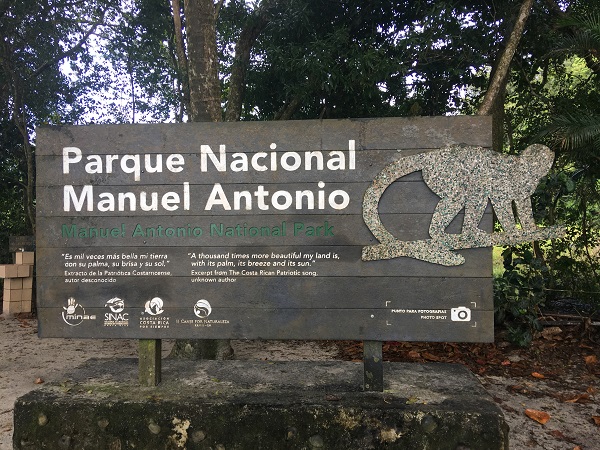
Manuel Antonio National Park has been rated as one of the 12 most beautiful national parks in the world by Forbes magazine. If you have moved to, or are visiting Costa Rica, you must visit and experience the lush vegetation of a tropical rain forest combined with a countless number of animals, insects and birds, pristine white and dark sand beaches, all with the backdrop of the beautiful Pacific ocean mixed with the jungle. If you are a nature lover, then this is for you.
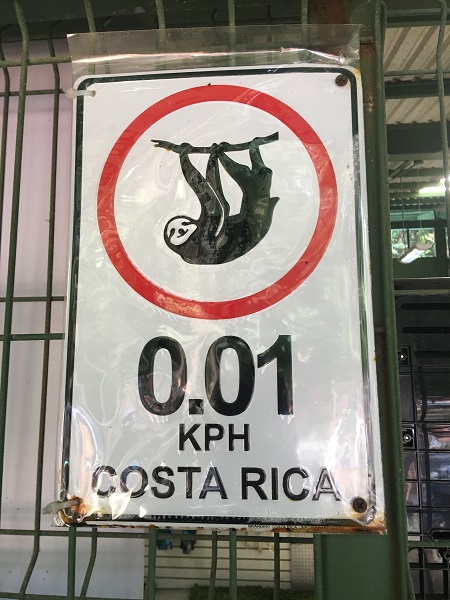
About Manuel Antonio National Park
The park is located on the Pacific Coast of Costa Rica, just south of Quepos. It sprawls over 5000 acres of dense tropical jungle. There are several well maintained hiking trails that meander both along the coast and down to 4 different beaches, but also inland to viewing platforms looking out over the Pacific ocean from high atop the hills.
Due to the worldwide popularity of Manuel Antonio National Park, it has become one of the most touristy places in all of Costa Rica, drawing in nearly 200,000 people each year. For the visitor, this can translate into very high prices, massive crowds, parking problems and general congestion once inside. If you are staying at a nearby hotel in the towns of Quepos or Manuel Antonio, expect high nightly rooms rates and a higher cost for just about everything, including eating out.
The park is in the middle of a beautiful tropical jungle with several different trails. All of the trails are well manicured and are covered with gravel, wood or concrete. The trails are all in very good condition. You are prohibited from walking outside of a trail not only to preserve the foliage but to make sure that you don't come in contact with many of the poisonous snakes hiding in the leaves and plant growth.
Important Things to Know Before You Go
Hours
Manual Antonio National Park is open 6 days a week, closed on Tuesdays, from 7am to 4pm. They are also open on holidays.
Tickets
One of the most important things to be aware of is that you cannot buy tickets at the park. You must buy them online in advance, for entry on a specific day and time slot, at the following web site.
Buy Tickets for Manuel Antonio National Park
The website has the option of displaying in English or Spanish via a pull down menu. You must create an account before you will have access to buying tickets.
You will need your Passport or residency card (DIMEX/Cedula), so have it ready.
One you log in, you will need to select the Wildlife Area (Parque Nacional Manuel Antonio), the schedule (time window that you want to enter) and the entry date (day of visit). Note that you can only buy tickets for one day at a time.
If you are a Costa Rica citizen, temporary resident or permanent resident, the adult ticket prices are approximately $3 USD per person and $1 USD for children between the ages of 6 and 12. If you are considered a foreign visitor, entered the country via a passport, tickets are $16 USD for adults and $5 for children between the ages of 2 and 12.
Your ticket receipt will be emailed to you. Print and take this with you for entry.
Parking
There are two parking lots located about 100 yards from the entrance to Manuel Antonio National Park.
IMPORTANT! - When you are approaching the park from the north, just after you come down the last hill, but before you turn on the road that takes you directly to the park's entrance, people will jump out in front of your car and tell you that this is the last and only place that you can park. These guys are total scammers and want to charge upwards of $90 USD to park for the day. Tell them no and move on.
The people at the two legitimate parking lots will also try to sell you parking that includes a guide. The four of us were quoted 100,000 colones (about $175 USD) to park and be part of a guided group. When we looked over at the next group that was getting ready to leave, we noticed that they consisted of about 20-30 people. No thank you. They are very high pressure and will continue to negotiate with you. Eventually we just said no, and paid about $6 USD for parking and no guide.
Should I Get a Guide
If this is your first time, yes, hire a guide but do so through a tour company or directly with a recommended guide well in advance of your arrival. While without a guide, we found lots of different creatures from snakes, iguanas, scarlet macaws, toucans and monkeys, a guide will enhance your chances of seeing even more, especially sloths, that are very hard to find if you are not an expert.
Prohibited Items
You cannot take any type of food into the park. At the entrance, all backpacks and purses will be searched and anything that is not allowed will be confiscated.
What to Wear
The weather is generally always warm or hot with the exception of a few rainy days. It is never cold. Shorts with light breathable tops in light colors are the best. Hiking sandals are preferred over standard sandals but both will work. You can swim at Manuel Antonio beach so bring a towel and swimsuit. Also bring bug spray especially if you visit during rainy season, May through mid November. If it is rainy season bring lightweight rain gear. Avoid plastic ponchos as they will make you feel like you are inside an oven.
Getting Started
Once checked in, as you enter the park, you will have two choices, 1) walk down a wide dirt road or veer to the right and take the smaller wood plank trail. Choose the later as you will see more wildlife. Both trails take you to the same main hub where the store and restrooms are. All other trails branch out from this central area.
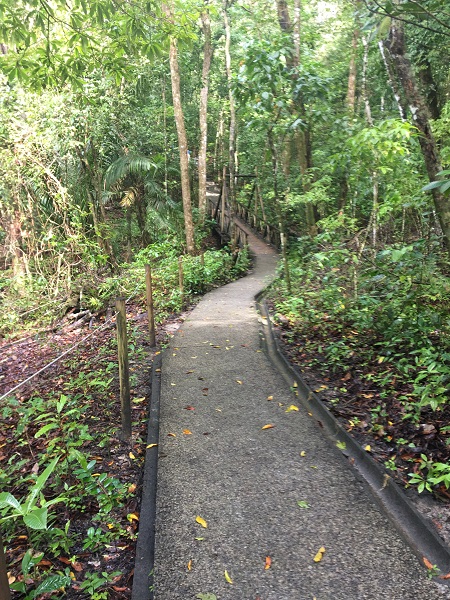
There will be a large number of monkeys congregating at the store, on the roof and in the trees. They are closely watching people eating the things purchased inside, and if you don't pay attention, they will jump down and steal your snack. The store sells sandwiches, pizza, drinks and other treats.
It seemed odd to us that any type of food was prohibiting from entering the park but this store sold all types of food and snacks. Also, for being a national park, and Costa Rica's claim of being environmentally friendly, most of the drinks were served in single use plastic containers.
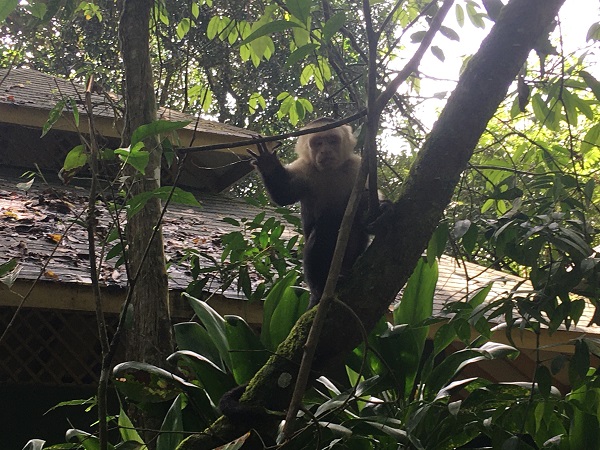
Some trails have cement or wood steps with railings such as the ones that go up to the viewing platforms.
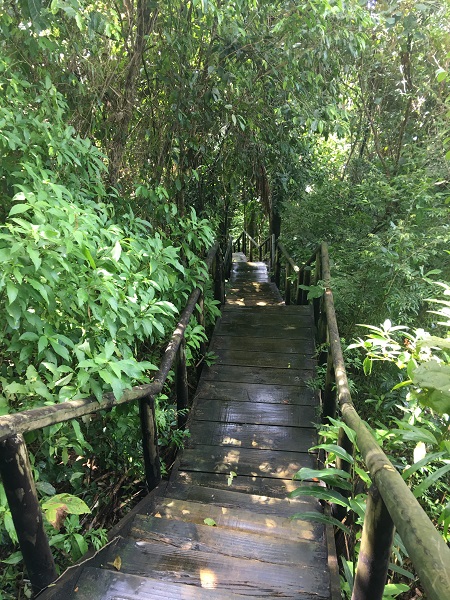
The trip to the highest viewing platform has at least 200 steps. I didn't count them but they seemed never ending.
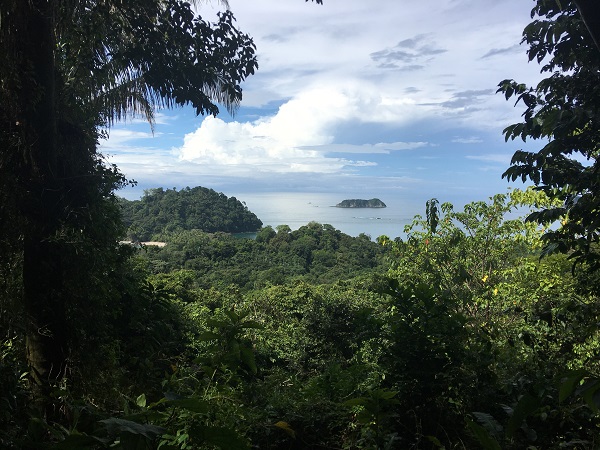
There are three different beaches that you can access via the trails. The most open and swim friendly one is Manuel Antonio beach. Costa Rica is well known for dangerous rip currents so make sure you watch for awhile to get a read on the current conditions before entering the water.
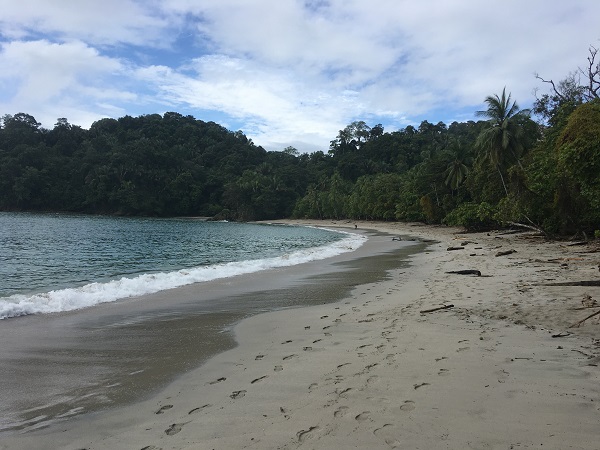
The other beaches, such as Playa Gemelas are more rugged.
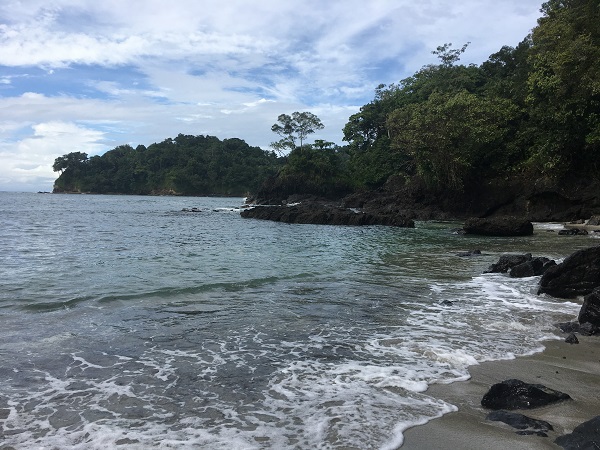
We saw several large iguanas hanging out on the rocks at the beach.
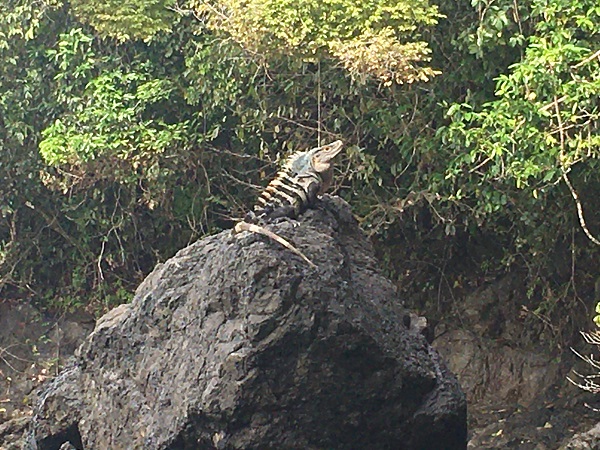
The day that we visited, the ocean was pretty calm and the weather was comfortable with some light showers in the morning.
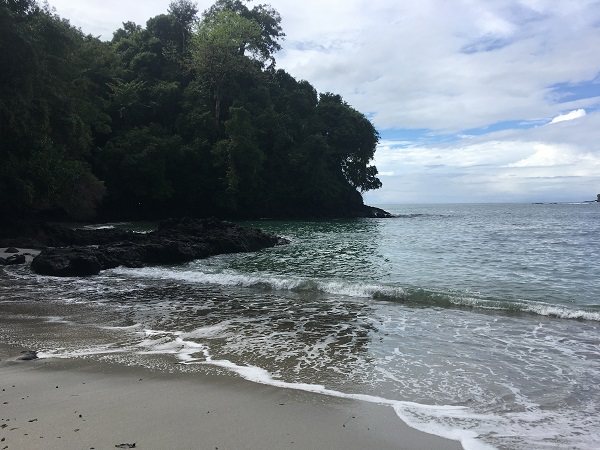
Best Times to Visit
The first consideration on visiting is weather. If you want to avoid the rain, December through April are the months to visit. However, these are also the warmest months with March and April being very hot and humid. If you do visit during this time, go to the park early in the morning before the sun gets too high in the sky. January through April also brings the biggest crowds, and for some, the heavy congestion will ruin the experience, especially if you don't get there right when they open.
Starting in May, the rains will start. May is a horribly hot month in Costa Rica Pacific coast. Dry season just ended, the temperatures are very hot and there is very high humidity and no wind. June through July see nicer conditions and the rainfall is usually limited to the afternoon. Once August, September and October arrive, all bets are off in terms of when the rain will occur. Some days will be beautiful and others will have torrential downpours that can last for days.
The rain starts to taper off in November but there can still be lots of it.
I think the very best time to visit is late November to mid December. Most of the rain is over and temperatures are comfortable. Also, the high season crowds have not arrived yet.
Here are some more details about the weather in Costa Rica.
How to Get There
Manuel Antonio is located just south of Quepos on the Pacific coast. From Tamarindo and Playa Flamingo it is about a 5 1/2 hour drive, Playas del Coco 6+ hours and San Jose about 3 hours.
Once you get to the towns of Quepos and Manuel Antonio, the roads become very narrow with lots of curves as they wind through the hills. Many streets are one way only, so pay attention and use a navigation tool such as Googlemaps or Waze.
The roads are all paved and in good condition. Four wheel drive in not required, however, I am a big believer that you always want to have a car with 4WD in Costa Rica due to road closures, detours, etc. that may take you off on a path that you did not expect. For more information, visit our Driving in Costa Rica page.
